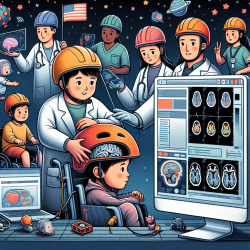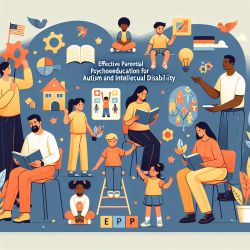Understanding Pediatric Head Trauma: Insights from Wuhan
As a Special Education Director, staying informed about the latest research in pediatric care is crucial. A recent study titled "Characteristics and Trends of Hospitalized Pediatric Abuse Head Trauma in Wuhan, China: 2002–2011" provides valuable insights into the alarming issue of child abuse-related traumatic brain injuries (TBI). This research, conducted over a decade, sheds light on the characteristics and trends of such injuries, emphasizing the need for increased awareness and intervention.
Key Findings from the Study
The study analyzed data from the Wuhan Medical Care Center for Women and Children, focusing on children aged 0-4 years. Here are some of the key findings:
- Out of 3,061 pediatric TBI cases, 4.6% (140 cases) were suspected to be related to child abuse.
- The majority of suspected abuse cases involved children under one year of age (68.6%), with a higher incidence in males (63.6%).
- Children with non-abusive head trauma (non-AHT) were more likely to have a full recovery (68.4%) compared to those with suspected abusive head trauma (AHT) (44.3%).
- The proportion of childhood TBI attributable to abuse did not show a significant increase over the 10-year period.
Implications for Practitioners
For practitioners working with children, this study highlights several critical areas for improvement and awareness:
- Early Detection: Practitioners should be trained to recognize signs of abuse, especially in infants and toddlers, to ensure timely intervention.
- Gender Considerations: While the study found a higher incidence in males, it's crucial to remain vigilant for signs of abuse in all children, regardless of gender.
- Recovery and Support: Children with suspected AHT require comprehensive care and support to improve recovery outcomes.
- Advocacy and Awareness: There is a need for greater public awareness and policy advocacy to address child abuse as a significant social and medical issue.
Encouraging Further Research
This study is a stepping stone for further research into pediatric head trauma and child abuse in China. Given the cultural and systemic challenges in recognizing and reporting child abuse, more studies are needed to develop effective prevention and intervention strategies. Practitioners are encouraged to contribute to this field by conducting research and sharing findings to improve outcomes for affected children.
To read the original research paper, please follow this link: Characteristics and Trends of Hospitalized Pediatric Abuse Head Trauma in Wuhan, China: 2002–2011.










